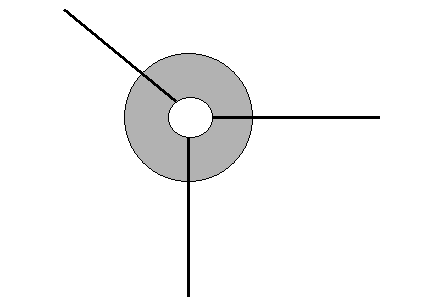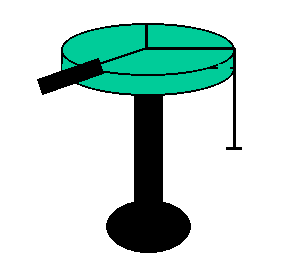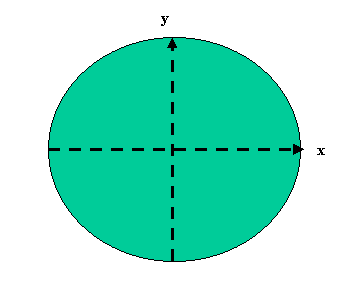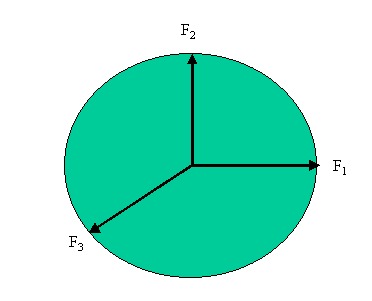


PYL 105



   |
PYL 105 |
   |

According to Newton's Second Law
F = m a,
if there is a net force acting on an object, then the object will accelerate. In this experiment we will consider a situation of static equilibrium, i.e. a case in which nothing is moving. If an object is not moving, then it is certainly not accelerating. And then using Newton's Second Law we can further conclude that there is no net force on the object. No net force does not mean there are no forces on the object, but rather that the effects of all of the individual forces cancel.
Forces have both a magnitude and a direction. The magnitude tells one the size of the push or pull supplied by the force, while the direction tells which way (e.g. along what angle) the object is being pushed or pulled. Forces are thus represented mathematically by vectors. A quantity must have certain properties in order for it to be considered a vector. For instance, there are rules expressing vectors in terms of components and rules for adding vectors.
Expressing a vector in terms of its components is also known as "resolving" it. Let us consider resolving a force F into components. Find the angle between the x axis and F as shown below. There are two conventions for measuring angles:
We'll adopt the second method in the following discussion. Another thing to keep in mind when dealing with angles is to keep track of whether one is working with degrees or radians.

We can think of F and its x and y components (Fx and Fy) as the sides of a right triangle, with F as the hypoteneuse and the components as the legs. Using the trigonometric relation that
cos θ = adjacent / hypoteneuse
we can determine that with the angle as drawn above, Fx, the x component of F is, up to a sign, given by
Fx = |F| cos θ
where |F| is the magnitude of F. Similarly, up to a sign the y component of F is given by
Fy = |F| sin θ
the magnitude of F times sin theta. The signs can be determined by which quadrant one is in
| Quadrant | Sign of x
component |
Sign of y
component |
| I | + | + |
| II | — | + |
| III | — | — |
| IV | + | — |
Part I. Resolving the force vector into components.





F1 + F3x
and the corresponding y component will be
F2 + F3y
For a vector to be zero, all of its components must be zero. Thus the two expressions above should yield zero. Verify this.
| Magnitude | Angle | Quadrant | Fx | Fy | |
| Force 1 | |||||
| Force 2 | |||||
| Force 3 | |||||
| Sum | XXX | XXX | XXX |
| Magnitude | Angle | Quadrant | Fx | Fy | |
| Force 1 | |||||
| Force 2 | |||||
| Force 3 | |||||
| Sum | XXX | XXX | XXX |
Are the sums of the components acceptably close to zero?
Part II. Adding vectors.
|G| = (Gx2 + Gy2)1/2
(Pythagorean theorem) and the direction (angle) by
θ = Arctan (Gy/Gx).
| Before | After | ||||||||||||||||||||||||||||||||||||||||||||||||||||||
|
|
| Before | After | ||||||||||||||||||||||||||||||||||||||||||||||||||||||
|
|
Did Force 3 change substantially when you replaced Forces 1 and 4 with Force G? Are any differences acceptable? Explain.
